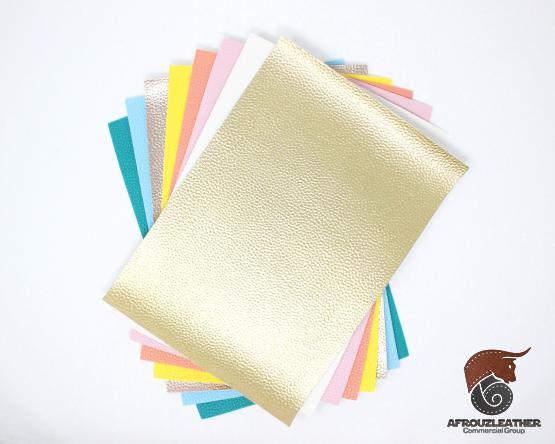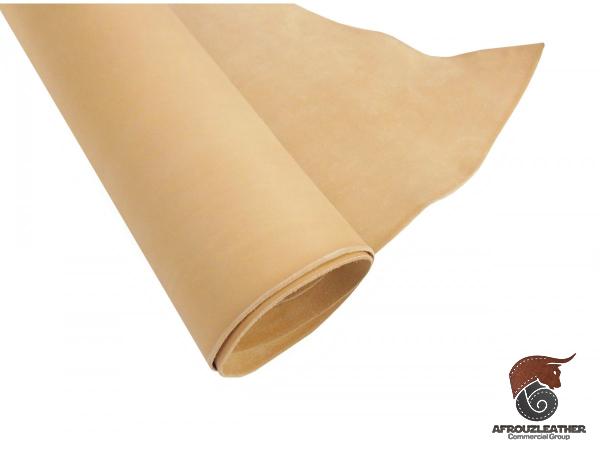Leather is a highly coveted material known for its durability, elegance, and timeless appeal. When purchasing leather products, consumers often come across two key terms: full grain leather and genuine leather. While these terms may sound similar, they refer to two distinct categories of leather quality and differ significantly in terms of production processes, durability, and overall value. This article aims to shed light on the key differences between full grain leather and genuine leather, enabling consumers to make informed decisions when purchasing leather items. Full Grain Leather: Full grain leather is revered as the highest-quality type of leather available in the market, appreciated for its unparalleled durability and natural beauty. It is derived from the top layer of the animal hide, which is the outermost and most durable part. Full grain leather is characterized by its unique grain patterns, natural marks, and inherent strength, allowing it to age gracefully over time. Production Process: The production of full grain leather involves minimal processing to retain its natural properties. The grain surface remains intact, showcasing imperfections, scars, and markings that lend visual appeal and authenticity to the leather product.
leather
 To ensure the leather’s high quality, the natural grain is only lightly buffed and undergoes minimal treatment, maintaining its original texture and strength. Durability and Strength: Full grain leather is renowned for its exceptional durability due to its unaltered grain surface. The natural grain acts as a protective layer, making it resistant to moisture, stains, and daily wear and tear. As a result, products made with full grain leather tend to last longer and develop a unique patina over time, enhancing their overall visual appeal and charm. Breathability and Comfort: Another notable characteristic of full grain leather is its breathability. The leather allows air to circulate, making it highly comfortable to wear, even in warm climates. Additionally, full grain leather molds to the wearer’s body, providing a personalized fit and increased comfort with each use. Aesthetics and Longevity: Full grain leather products possess a distinct and luxurious appearance that appeals to leather enthusiasts. The natural grain patterns and imperfections contribute to its unique beauty, differentiating it from other types of leather. Over time, full grain leather develops a rich patina, showcasing its age and providing depth to the product.
To ensure the leather’s high quality, the natural grain is only lightly buffed and undergoes minimal treatment, maintaining its original texture and strength. Durability and Strength: Full grain leather is renowned for its exceptional durability due to its unaltered grain surface. The natural grain acts as a protective layer, making it resistant to moisture, stains, and daily wear and tear. As a result, products made with full grain leather tend to last longer and develop a unique patina over time, enhancing their overall visual appeal and charm. Breathability and Comfort: Another notable characteristic of full grain leather is its breathability. The leather allows air to circulate, making it highly comfortable to wear, even in warm climates. Additionally, full grain leather molds to the wearer’s body, providing a personalized fit and increased comfort with each use. Aesthetics and Longevity: Full grain leather products possess a distinct and luxurious appearance that appeals to leather enthusiasts. The natural grain patterns and imperfections contribute to its unique beauty, differentiating it from other types of leather. Over time, full grain leather develops a rich patina, showcasing its age and providing depth to the product.
Specifications of leather
 This aging process is highly valued among leather enthusiasts, making full grain leather products highly sought-after and considered long-term investments. Genuine Leather: Genuine leather, although often misunderstood as top-tier leather, refers to a lower-quality type of leather that comes from splitting the top grain of the hide. It is typically produced using the lower layers of the animal hide, which undergoes significant processing to remove imperfections and blemishes. Production Process: During the manufacturing process of genuine leather, a split is made through the animal hide, separating the top grain from the lower layers. The lower layers are then utilized to create genuine leather, commonly referred to as “corrected grain” leather. To conceal blemishes, the surface of genuine leather is often sanded, and artificial grain patterns are added. Additionally, coatings and dyes are applied to create a more consistent appearance. Durability and Quality: Compared to full grain leather, genuine leather is less durable and tends to wear out quicker over time. The removal of the natural grain weakens the leather’s structure, reducing its resistance to moisture, scratches, and tears. As a result, products made with genuine leather may show signs of wear and tear more readily and offer a shorter lifespan. Aesthetics: Although genuine leather may resemble full grain leather at first glance, it lacks the natural beauty and authentic feel of its superior counterpart. The added artificial grain patterns and surface treatments can give genuine leather a somewhat plastic-like texture and less desirable appearance over time.
This aging process is highly valued among leather enthusiasts, making full grain leather products highly sought-after and considered long-term investments. Genuine Leather: Genuine leather, although often misunderstood as top-tier leather, refers to a lower-quality type of leather that comes from splitting the top grain of the hide. It is typically produced using the lower layers of the animal hide, which undergoes significant processing to remove imperfections and blemishes. Production Process: During the manufacturing process of genuine leather, a split is made through the animal hide, separating the top grain from the lower layers. The lower layers are then utilized to create genuine leather, commonly referred to as “corrected grain” leather. To conceal blemishes, the surface of genuine leather is often sanded, and artificial grain patterns are added. Additionally, coatings and dyes are applied to create a more consistent appearance. Durability and Quality: Compared to full grain leather, genuine leather is less durable and tends to wear out quicker over time. The removal of the natural grain weakens the leather’s structure, reducing its resistance to moisture, scratches, and tears. As a result, products made with genuine leather may show signs of wear and tear more readily and offer a shorter lifespan. Aesthetics: Although genuine leather may resemble full grain leather at first glance, it lacks the natural beauty and authentic feel of its superior counterpart. The added artificial grain patterns and surface treatments can give genuine leather a somewhat plastic-like texture and less desirable appearance over time.
buy leather
 Price and Availability: Genuine leather products are generally more affordable compared to full grain leather due to the lower quality of the material. However, it is important to note that the durability and overall value of genuine leather products are somewhat compromised. Conclusion: When purchasing leather products, understanding the differences between full grain leather and genuine leather is crucial. While genuine leather may serve as a cost-effective option for those seeking affordability, it is essential to consider its limited durability and potential aesthetic drawbacks. On the other hand, full grain leather, with its exceptional quality, longevity, and natural beauty, offers a higher value proposition, making it an excellent choice for those seeking leather products that are built to last. By knowing the key characteristics and nuances of both types of leather, consumers can make informed decisions and invest wisely in leather goods that align with their personal preferences and needs.
Price and Availability: Genuine leather products are generally more affordable compared to full grain leather due to the lower quality of the material. However, it is important to note that the durability and overall value of genuine leather products are somewhat compromised. Conclusion: When purchasing leather products, understanding the differences between full grain leather and genuine leather is crucial. While genuine leather may serve as a cost-effective option for those seeking affordability, it is essential to consider its limited durability and potential aesthetic drawbacks. On the other hand, full grain leather, with its exceptional quality, longevity, and natural beauty, offers a higher value proposition, making it an excellent choice for those seeking leather products that are built to last. By knowing the key characteristics and nuances of both types of leather, consumers can make informed decisions and invest wisely in leather goods that align with their personal preferences and needs.

Your comment submitted.